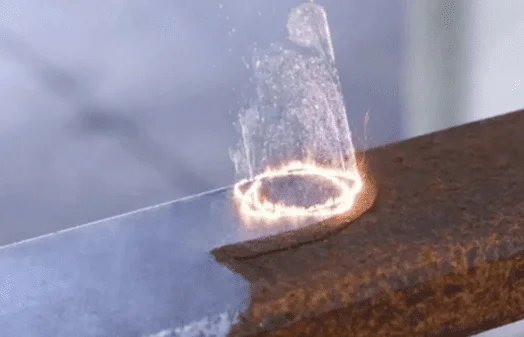Fiber laser cleaning machines are using laser ablation to vaporize rust, paint, and coatings from surfaces by turning them into dust and fumes. This method can be used on many materials including metals, plastics, ceramics, stone, glass, and wood.

How Laser Cleaning Machine Works:
Laser cleaning machine works by directing a laser beam onto a surface where the laser energy is absorbed, which causing the contaminant to reach its ablation threshold and vaporize.
The laser cleaning machine working won’t burn the material surface because the ablation threshold of the base material is higher than the contaminants on surface. So it can selectively remove a layer of material from a surface without damaging the material underneath.
The materials that a handheld laser cleaning machine can work on:
Metals: The continuous laser cleaning machine can effectively work on steel, stainless steel, aluminum, copper, brass, cast iron, and alloy materials by removing rust, oxides, welding slag, and coatings on them.
Non-Metals: The fiber laser cleaner also can work on non-metals like plastics, composite materials, glass, ceramics, stone, and wood , The pulsed laser cleaning machine is suitable for artifacts and artworks cleaning with less damage on surface.
Applications of Laser Cleaning:
Cleaning surfaces for welding, bonding, painting and coating;
Removing oxides, electrolytes, and dust;
Removing e-coating, phosphate coating, and powder coating;
Replacing polluting methods like sandblasting;
Cleaning artifacts and artwork;
De-coating solar panels;
Selective paint removal in the automotive and aerospace industries.
Laser cleaning machines are favored in industrial applications for several reasons, including the elimination of consumables, ease of automation, improvement in product quality, and a good return on investment. It is also considered a safe and sustainable cleaning method because it doesn’t require abrasive materials or chemical solvents. Additionally, any vapors produced during the cleaning process can be easily removed by using a fume extraction system.
